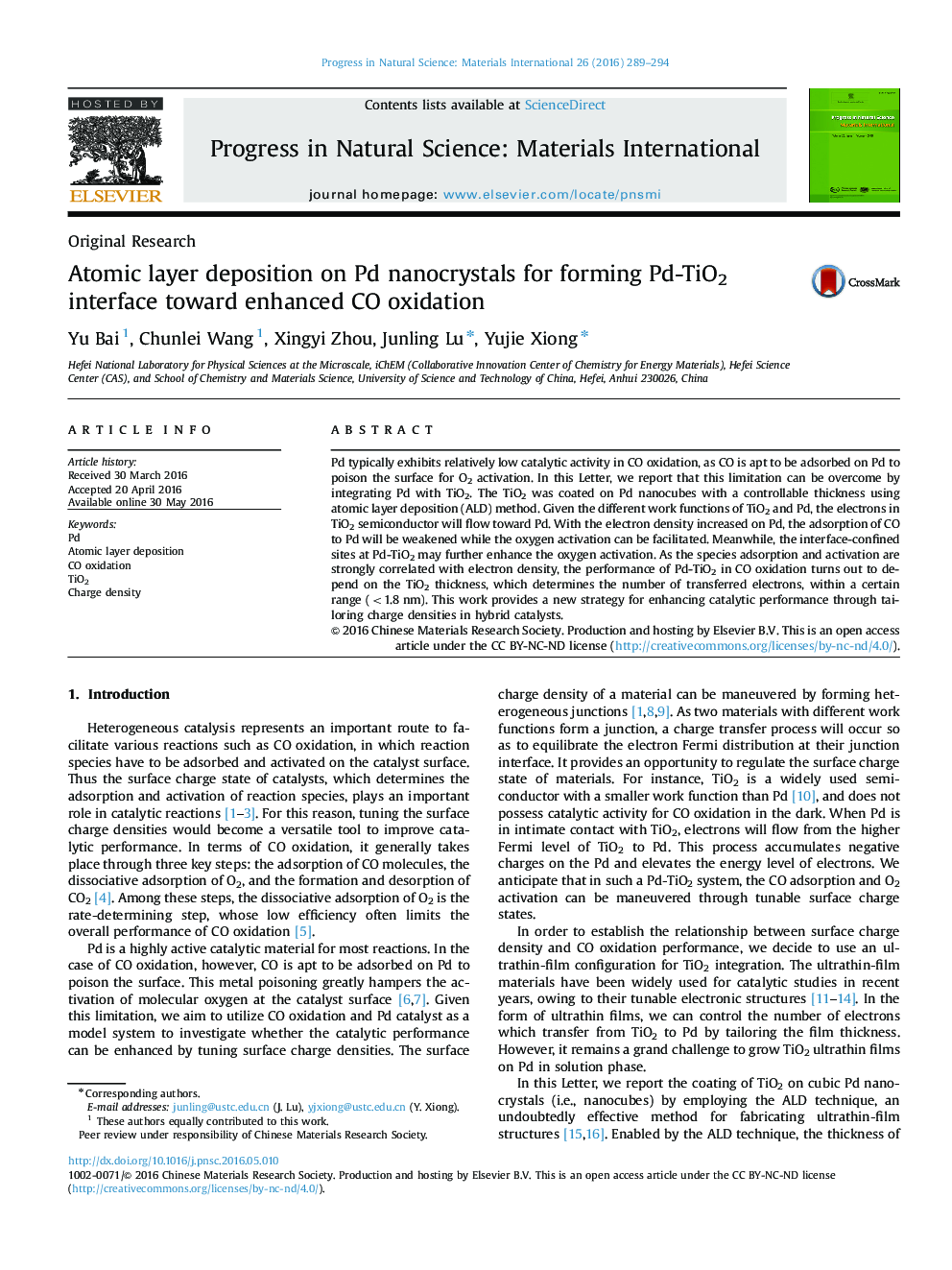| Article ID | Journal | Published Year | Pages | File Type |
|---|---|---|---|---|
| 1548023 | Progress in Natural Science: Materials International | 2016 | 6 Pages |
Pd typically exhibits relatively low catalytic activity in CO oxidation, as CO is apt to be adsorbed on Pd to poison the surface for O2 activation. In this Letter, we report that this limitation can be overcome by integrating Pd with TiO2. The TiO2 was coated on Pd nanocubes with a controllable thickness using atomic layer deposition (ALD) method. Given the different work functions of TiO2 and Pd, the electrons in TiO2 semiconductor will flow toward Pd. With the electron density increased on Pd, the adsorption of CO to Pd will be weakened while the oxygen activation can be facilitated. Meanwhile, the interface-confined sites at Pd-TiO2 may further enhance the oxygen activation. As the species adsorption and activation are strongly correlated with electron density, the performance of Pd-TiO2 in CO oxidation turns out to depend on the TiO2 thickness, which determines the number of transferred electrons, within a certain range (<1.8 nm). This work provides a new strategy for enhancing catalytic performance through tailoring charge densities in hybrid catalysts.
